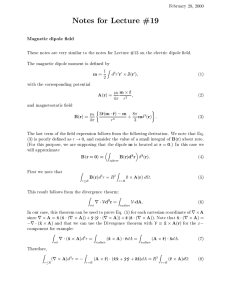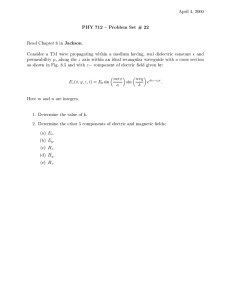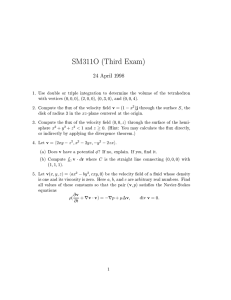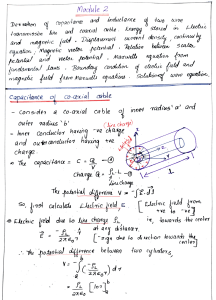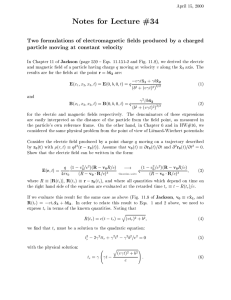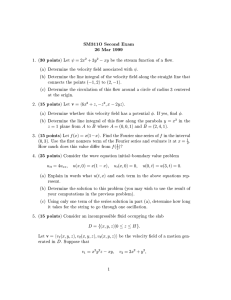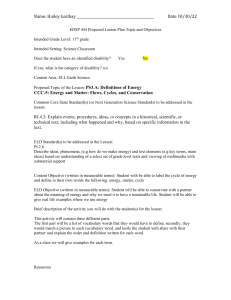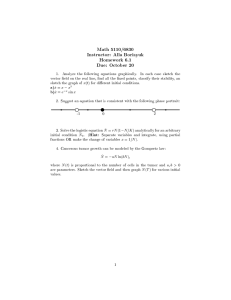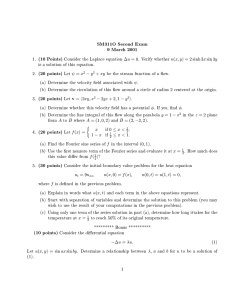Marc h 9, 2000
advertisement
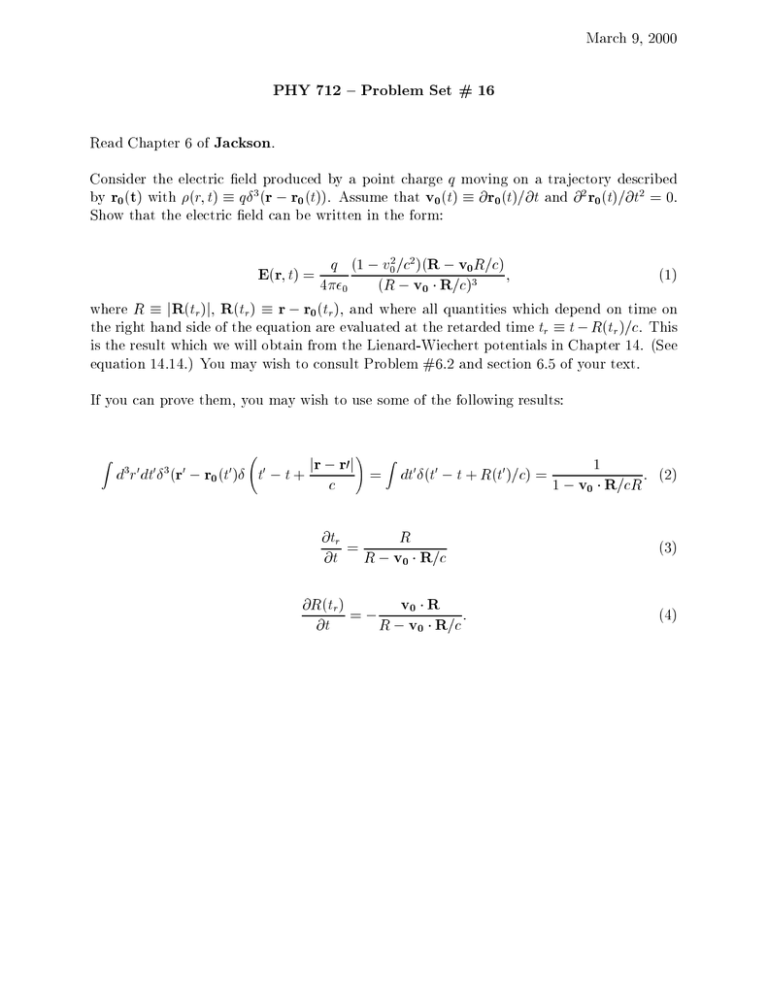
March 9, 2000
PHY 712 { Problem Set # 16
Read Chapter 6 of
Jackson.
Consider the electric eld produced by a point charge q moving on a trajectory described
2
2
by 0( ) with (r; t) qÆ 3 (
0 (t)). Assume that 0 (t) @ 0 (t)=@t and @ 0 (t)=@t = 0.
Show that the electric eld can be written in the form:
r t
r r
v
r
r
(1)
E(r; t) = 4q (1 (vR =c v)(0R R=cv)0R=c) ;
where R jR(t )j, R(t ) r r0 (t ), and where all quantities which depend on time on
2
0
2
3
0
r
r
r
the right hand side of the equation are evaluated at the retarded time tr t R(tr )=c. This
is the result which we will obtain from the Lienard-Wiechert potentials in Chapter 14. (See
equation 14.14.) You may wish to consult Problem #6.2 and section 6.5 of your text.
If you can prove them, you may wish to use some of the following results:
Z
3
d r dt Æ
0
0
3
r r0(t )Æ
(
0
0
t
0
jr
t+
r0j ! = Z dt Æ(t
0
c
@tr
@t
@R(tr )
@t
=
=
0
t + R(t0 )=c)
R
v0 R=c
R
R
v0 R :
v0 R=c
=
1
1
v0 R=cR :
(2)
(3)
(4)
